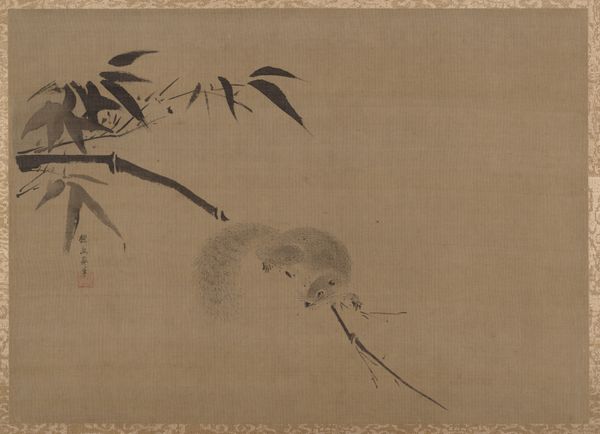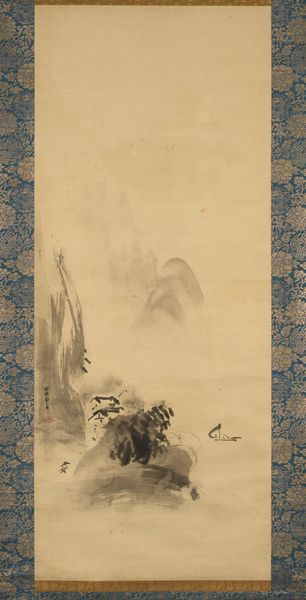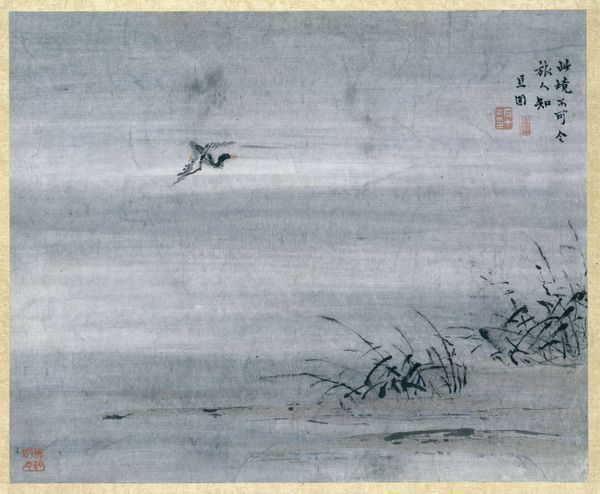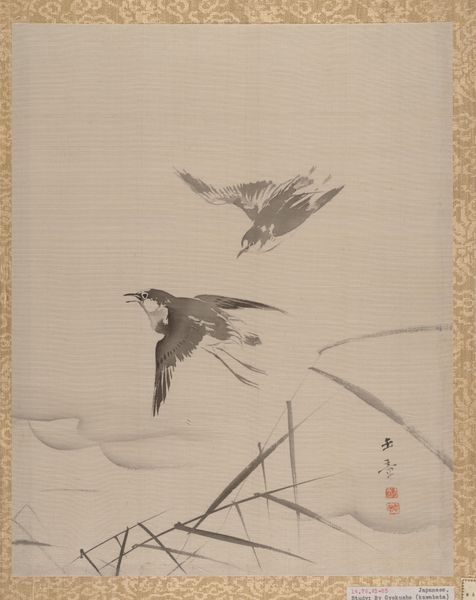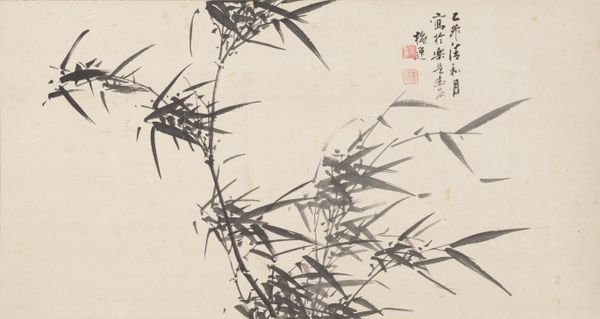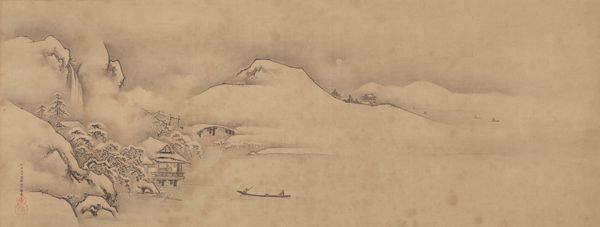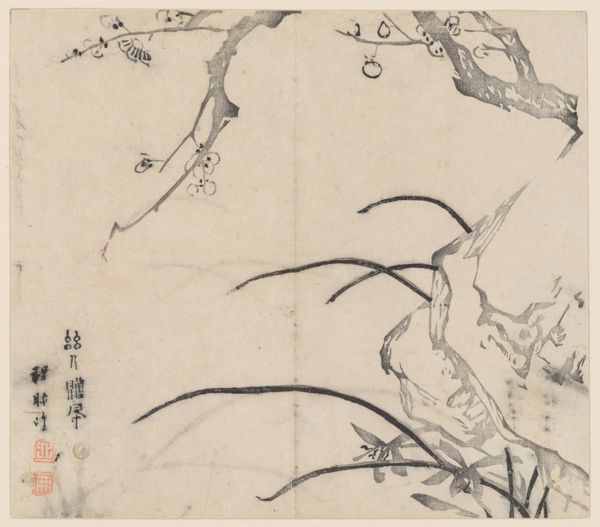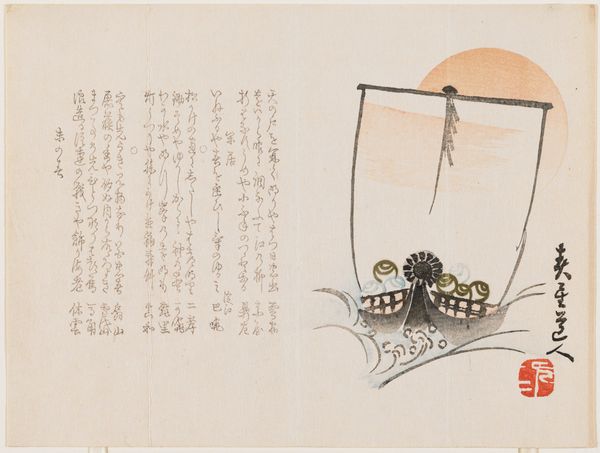
painting, watercolor, ink
#
water colours
#
painting
#
asian-art
#
landscape
#
figuration
#
watercolor
#
ink
#
line
Dimensions: 8 3/8 x 10 3/4 in. (21.3 x 27.3 cm)
Copyright: Public Domain
Curator: "Ducks and Reeds," made with ink and watercolor around 1640-1650, is a tranquil scene by the Japanese artist Kano Tan'yū. It is currently held at the Metropolitan Museum of Art. Editor: It's a masterclass in suggestion; just a few well-placed brushstrokes create a feeling of vastness and serene isolation. The overall tone is very muted, creating an intimate viewing experience. Curator: It is important to see Tan'yū's works within the broader socio-political sphere. His elevated position as official artist to the Tokugawa shogunate gave him considerable influence over artistic taste and production throughout Japan. This is the work of a well-supported member of the elite class. Editor: The arrangement is cleverly simple. Note how the lines guide the eye from the reeds at the top to the ducks clustered towards the lower-right. The empty space gives equal weight to what isn't depicted as it does to what is, suggesting more beyond the immediate frame. Curator: And consider the materials, though: paper, ink, watercolor. These weren't particularly costly. What made them 'art' was the context of production, Kano's skill and position, and the social value afforded to them. The labour involved and the control of these processes speaks volumes of societal power. Editor: I can appreciate the influence of production. But focusing too much on external factors distracts from Tan'yū's deft handling of ink, creating those stunning tonal variations and fluid lines. I could argue that such visual qualities in turn were part of producing that elite context! Curator: Of course, without this material and political system allowing such things to exist there would have never been an artwork to start with. Editor: Well, perhaps we can appreciate how this deceptively simple painting—with its focus on compositional arrangement and suggestive form—continues to fascinate. Curator: And also appreciate how the socioeconomic forces enabled its very existence and influenced how such artworks were given meaning at the time. Both perspectives add value.
Comments
No comments
Be the first to comment and join the conversation on the ultimate creative platform.
